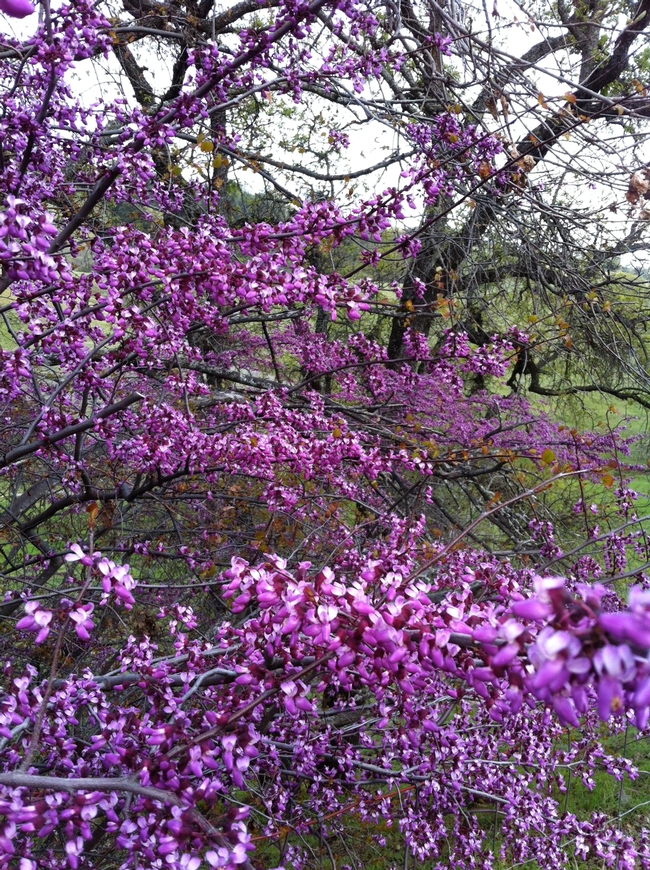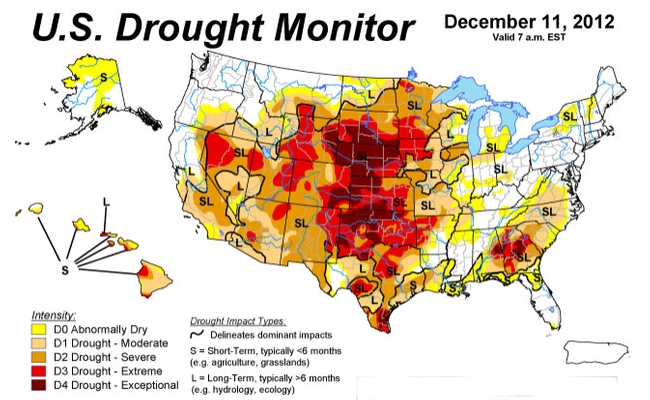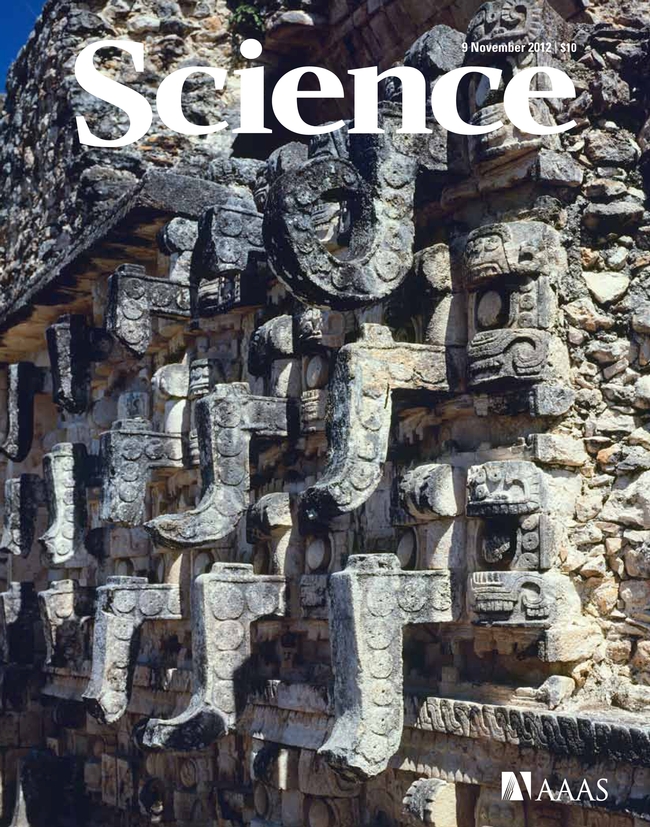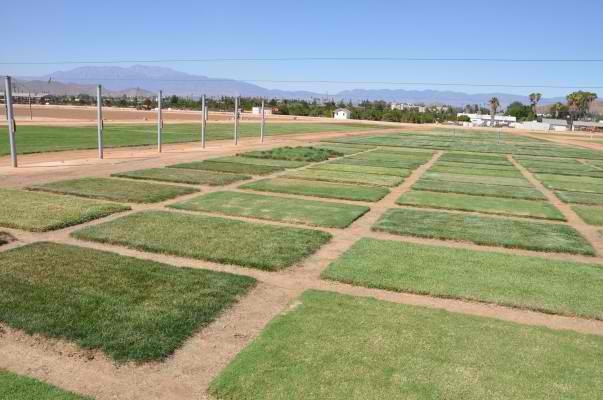Posts Tagged: drought
The California Stunner
As our dry winter continues, I feel the need to drag out my soapbox once again. Isn’t it time we got real about drought-tolerant landscaping? I am not advocating severe rock-and-cactus plantings. I’m suggesting some serious consideration of California native plantings.
March is the perfect month for us to take notice of the beauty of California native plants. Poppies and lupines are coloring hillsides all across the state. Manzanitas are dotted with tiny whitish blooms. Our stately blue oaks are budding out. Ceanothus is blooming cool blue from the coast to the foothills. And all this glory comes along without supplementary irrigation!
Have you noticed the other California stunner? The Western redbud (Cercis occidentalis) is dazzling right about now, its leafless branches covered in magenta blooms. You can see the shrubs along roadsides and freeways throughout Solano, Yolo and Sacramento counties. They’re particularly beautiful on the road to Lake Berryessa.
Now this is a native I can really get behind. It is easy to grow, though a bit slow. It’s not too picky about soil, but seems to be happiest on a well-drained, sunny hillside. It is deciduous, but with year-round interest (magenta blossoms now, burgundy heart-shaped leaves in spring, seedpods throughout winter). It can be trained into a smallish tree (8-20 feet), or left to its shrubby natural growth patterns. Not much bothers redbuds. The best part, in my opinion: Once a Western redbud is established in your landscape, it does not require extra irrigation. You might attain faster growth with occasional summer water, but the tree will do just fine without.
How cool is that?

Blooming stands of Western redbud can be found in March along Pleasants Valley Road in rural Vacaville. (photo by Kathy Thomas-Rico)
Rain has painted California rangeland green
Steady rain so far this fall has produced a verdant emerald green panorama on California rangeland, reported Capital Press this week.
Livestock producers are elated, said Josh Davy, a UC Cooperative Extension advisor in Tehama County.
"It's been nice to start the year with some big rains because it fills up the reservoirs, puts some drinking water out there and it helps build deeper soil moisture in case it doesn't rain later," Davy said. "We hope it keeps going until March."
The 2012 rainy autumn has helped much of Northern California emerge from drought conditions, according to the U.S. Drought Monitor. Parts of the southern San Joaquin Valley are still in severe drought, but conditions have shown some improvement.
UC Davis olive center to look at ways to reduce wastewater
Melanie Turner, Sacramento Business Journal
The UC Davis Olive Center and USDA-Agricultural Research Service have been awarded a grant to develop innovative ways to reduce the amount of wastewater produced by the olive oil industry. Among the technologies to be evaluated is a “vibrating membrane system” patented by New Logic Research of Emeryville. The company will be providing the system for testing at no cost.
Drought hastened collapse of Maya civilization
Decades of extreme weather crippled, and ultimately decimated, first the political culture and later the human population of the ancient Maya, according to a study by an interdisciplinary team of researchers that includes two University of California, Davis, scientists.
Now, for the first time, researchers have combined a precise climatic record of the Maya environment with a precise record of Maya political history to provide a better understanding of the role weather had in the civilization’s downfall.
Their findings are published in the Nov. 9, 2012, issue of the journal Science.
“Here you had an amazing state-level society that had created calendars, magnificent architecture, works of art, and was engaged in trade throughout Central America,” said UC Davis anthropology professor and co-author Bruce Winterhalder. “They were incredible craftspersons, proficient in agriculture, statesmanship and warfare — and within about 80 years, it fell completely apart.”
To determine what was happening in the sociopolitical realm during each of those years, the study tapped the extensive Maya Hieroglyphic Database Project, run by linguist Martha Macri, a professor of Native American studies and director of the Native American Language Center at UC Davis. Macri, a specialist in Maya hieroglyphs, has been tracking the culture’s stone monuments for nearly 30 years.
“Every one of these Maya monuments is political history,” said Macri.
Inscribed on each monument is the date it was erected and dates of significant events, such as a ruler’s birthday or accession to power, as well as dates of some deaths, burials and major battles. The researchers noted that the number of monuments carved decreased in the years leading to the collapse.
But the monuments made no mention of ecological events, such as storms, drought or references to crop successes or failures.
For that information, the research team collected a stalagmite from a cave in Belize, less than 1 mile from the Maya site of Uxbenka and about 18 miles from three other important centers. Using oxygen isotope dating in 0.1 millimeter increments along the length of the stalagmite, the scientists uncovered a physical record of rainfall over the past 2,000 years.
Combined, the stalagmite and hieroglyphs allowed the researchers to link precipitation to politics. Periods of high and increasing rainfall coincided with a rise in population and political centers between A.D. 300 and 660. A climate reversal and drying trend between A.D. 660 and 1000 triggered political competition, increased warfare, overall sociopolitical instability, and finally, political collapse. This was followed by an extended drought between A.D. 1020 and 1100 that likely corresponded with crop failures, death, famine, migration and, ultimately, the collapse of the Maya population.
“It has long been suspected that weather events can cause a lot of political unrest and subject societies to disease and invasion,” Macri said. “But now it’s clear. There is physical evidence that correlates right along with it. We are dependent on climatological events that are beyond our control.”
Said Winterhalder: “It’s a cautionary tale about how fragile our political structure might be. Are we in danger the same way the Classic Maya were in danger? I don’t know. But I suspect that just before their rapid descent and disappearance, Maya political elites were quite confident about their achievements.”
Co-authors leading the study are Douglas Kennett of Pennsylvania State University and Sebastian Breitenbach of Eidgenossische Technische Hochschule in Switzerland. The research was funded by the National Science Foundation, the European Research Council and Alphawood Foundation.
You can have a green landscape while conserving water
Turfgrass and landscape professionals will gather tomorrow, Sept. 13, at UC Riverside to learn about the latest innovations in turfgrass research and management. The 2012 Turfgrass and Landscape Research Field Day will start at 7 a.m.
One of the featured tour stops will be a research plot in which 18 plant species grown as landscape groundcovers are being evaluated for their ability to perform with low amounts of water. Dennis Pittenger, UC Cooperative Extension advisor for California’s Central Coast and South Region, and UC Cooperative Extension specialist Donald Merhaut, both based in the Department of Botany & Plant Sciences at UC Riverside, are conducting this study.
“Currently the plant materials are receiving about one-half the amount of water normally required by a tall fescue lawn, and all but three or four species appear to perform acceptably with this limited amount of water,” says Pittenger. “However, we will continue this treatment for another year to gain a full evaluation of these species' response to long-term limited irrigation.”
Residential water use totaled 5.9 million acre feet in 2005. California Assembly Bill 1881 resulted in California enacting an ordinance on January 1, 2010, reducing the evapotranspiration adjustment factor (ETAF) from 0.8 to 0.7 in new landscapes over 2,500 square feet.
David Fujino, executive director of the California Center for Urban Horticulture at UC Davis, Janet Hartin, UC Cooperative Extension advisor for San Bernardino and Los Angeles counties, and Loren Oki, UC Cooperative Extension specialist in the Department of Plant Sciences at UC Davis, received $450,000 from the California Department of Water Resources to reduce water waste and increase the landscape industry’s adoption of the new standard.
With the field assistance of William Baker and Associates, Fujino, Hartin and Oki, along with UC Cooperative Extension advisors Karrie Reid, Chuck Ingels, Mary Bianchi, and Darren Haver are setting up 30 large demonstration sites at publicly and commercially maintained landscape locations throughout the state that exemplify research-based best management practices. A variety of ornamental plants with varying evapotranspiration rates growing under a wide array of plant densities and microclimates are growing at the sites.
Demonstration sites can be seen at the following locations:
- Intel, Folsom
- Franchise Tax Board, Capitol Park, Sacramento,
- Stockton Golf and Country Club
- Woodbridge Golf and Country Club
- Fair Oaks Horticulture Center, Sacramento,
- Mission Oaks Parks and Recreation District, Sacramento
- City of Tracey
- University of California Santa Barbara
- City of Lakewood
- City of Murrieta
- City of Palm Desert
- Thunderbird Country Club, Rancho Mirage
- California Baptist University
- City of Santa Barbara
- City of Lompoc
At the field day, Hartin, an environmental horticulture expert, will talk about best management practices that large public and private landscape and irrigation managers can implement to meet the 0.7 ETAF for landscapes over 2,500 square feet.
Specific practices that she will discuss include hydrozoning (placing plants with similar water needs together), irrigation scheduling based on water requirements of the various zones, optimizing sprinkler system distribution uniformity, drip irrigation when appropriate, weed control and proper use of soil amendments and mulch.
The event will be held at the university’s Turfgrass Research Facility at 1060 Martin Luther King Blvd. in Riverside.
“With the addition of new research areas, UCR now has a state-of-the-art, second-to-none facility to study irrigation and salinity effects on turfgrass and landscape plants,” says James Baird, a UC Cooperative Extension specialist in the Department of Botany and Plant Sciences at UC Riverside, who is leading the field day. “UCR is addressing the challenges of maintaining turf and landscape plants with diminishing water resources by identifying: drought tolerance among new and existing germplasm; commercial products that help save water; and best management practices using recycled and alternate water sources for irrigation.”
Registration for the field day costs $100, which includes lunch. To register, view the agenda or get directions for tomorrow’s field day, go to http://ucanr.org/sites/turfgrassfieldday.
Droughtless in Seattle
It’s been both interesting and frightening watching the drought unfold across the country this spring and summer. It’s a very serious situation, and may be a harbinger and an affirmation of climate change. I believe it is.
Has it dawned on anyone else that the dry, hot summer the rest of the country has suffered through is exactly like what we Californians endure most years? Could it be the rest of the country will soon share our Mediterranean climate, of relatively wet, warm winters and summers of drought? Now THAT’s something to mull.
Of course, our West Coast climate is changing, too. Spring seems to arrive and leave sooner than in years past. The winter and spring rains seem to fall torrentially, rather than a few days here, followed by a few days to soak in, and on and on. And the often-sparse Sierra snowpack melts sooner in the year.
But because we in the West are adapted to our summer-drought cycle, we have built a good system of water storage to catch those spring rains and snowmelt. The Midwest, South and East Coast do not have this same system. No need when you usually have plenty of summer rain that soaks into the soil and keeps the rivers running high.
A recent family vacation to Seattle was an eye-opener for me. While there, I saw nightly news video of the drought-ravaged Midwest. Even the mighty Mississippi River was too low for some maritime traffic. Graphics were aired showing the extent of the drought. About the only place on the map of the continental U.S. that was not in drought was western Washington State (including Seattle), which has had an unusually wet and cool summer.
Maybe we should have looked at property while we were there. I could see a land rush happening in the region; it’s where most of the water is.

No drought worries in lush, water-filled Century Square in downtown Seattle. Katie, Christopher and Emelyn Rico of Vacaville visited there recently. (Photo by Kathy Thomas-Rico)





